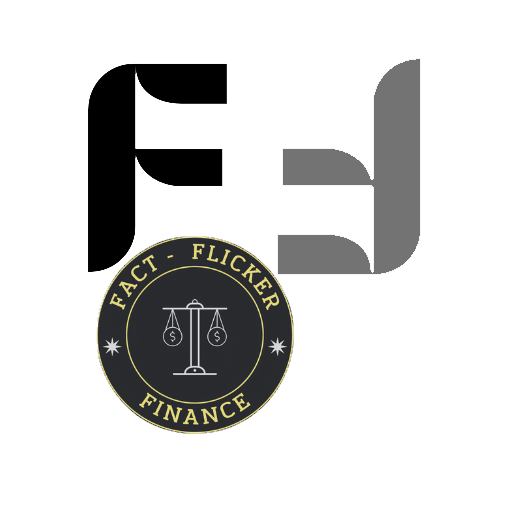Short Inroduction:
Safety and Efficiency in Articulating Boom Crane Operations
To guarantee safety and productivity, articulate boom cranes should be examined. Employ guidelines set by OSHA and guidelines recommended by occupational safety and health experts at FactFlicker.online.
Introduction: Why Inspecting Articulating Boom Crane Matters
The basic necessity for safe, efficient and standard articulating boom cranes means that their inspection is paramount. These are fundamental working equipment among contractors in construction and many industrial activities, and hence, require highest maintenance. At FactFlicker.online we try to stick to OSHA regulations, manufacturers’ guidelines and ASME standards. This article is a one-stop manual that encapsulates important aspects of inspecting articulating boom cranes with the aim of getting the best out of them in terms of durability, safety, and effectiveness.
Understanding Articulating Boom Crane Safety Standards
OSHA Regulations and Compliance
Among the basics of crane safety, one should mention the need to follow OSHA’s strict rules and requirements. OSHA 29 CFR 1910.179 lays down standards that make workplace safety mandatory and eliminate risks. Key requirements include:
- Crane inspection should be done at least once a year by a certified and professional crane inspector.
- Recertification for crane operators.
- Good record-keeping of the results of the inspection.
This means that by following these rules, companies do not only improve safety for their employees but also do not have to be penalized and face numerous disruptions in operations.
Manufacturers’ Maintenance Guidelines
Currently, manufacturers of cranes offer a maintenance schedule that is unique to the design and usage of the specific crane. These guidelines help operators:
- Be able to predict possible problems in advance.
- Campaigen FRC is also useful in mounting campaigns in avoiding expensive repair and time off services.
- Increase the effective service life of the crane.
Relating to this manual provides certainty that the performance of inspections is precise and sufficient.
Importance of Regular Inspection Cycles
Therefore, whereas routine inspections are usually seen more in terms of legal requirements, it is important to note that the inspections add value and discoveries as they help the performance and safety causes of the crane. Key components to inspect include:
- Hydraulic systems
- Structural elements
- Operational mechanisms
Risks are decreased and frequency, productivity is increased, and tools and equipment durability is increased through inspection.
Preparing for the Inspection: Tools and Safety Gear
Critical Tools for Crane Inspections
The right inspection tools help inspectors do their job better and more accurately. Essential tools include:
| Tool | Purpose |
| Torque wrenches | Ensure bolts and nuts are tightened to specifications |
| Ultrasonic testers | Detect internal defects in metal components |
| Inspection mirrors | Access hard-to-reach areas for visual checks |
Personal Protective Equipment (PPE) Essentials
Safety rules take top priority whenever someone performs a crane inspection. Essential PPE includes:
| Equipment | Purpose |
| Hard hats | Protect against falling debris |
| Safety goggles | Shield eyes from dust and debris |
| High-visibility vests | Ensure visibility in busy environments |
| Steel-toed boots | Protect feet from heavy objects |
Pre-Inspection Safety Checklist
Before beginning an inspection, follow these safety steps:
- Test all safety gear to ensure it is in proper condition and correct fit.
- Verify that tools function correctly according to their established measurements.
- Remove all staff and potential dangers from around the inspection location.
- Check if all safety communication systems and warning signals work properly.
Inspecting the Structure of the Articulating Boom Crane
Examining the Boom for Structural Integrity
The central section of a crane is its boom. Inspect it for:
- Cracks, bending, or visible signs of damage on the boom.
- Alignment issues.
- ASME B30.5 recognizes the boom as a standard product.
Look for damage both with your eyes and with specialized ultrasonic testing equipment.
Assessing Wear and Fatigue on Moving Parts
Inspect critical components such as:
- Hinges
- Pins
- Bearings
This way, they eliminate discomfort and prolong the use of a crane, since some of its parts may be worn out. (Crane Maintenance)
Checking for Corrosion and Metal Fatigue
It also reduces the mechanical strength of the protective coatings and exposes the metal structure to influence the failure potential. Conduct thorough checks for:
- Rust and pitting
- Scaling
- Spots of metal fatigue or a condition resulting from the metal’s inability to withstand the mechanical pressure of constant use.
These problems, when solved fast, keep the crane safe and functional.
Operational Testing of the Crane’s Mechanisms
Load Testing Procedures
Load testing takes place to reproduce the general working conditions in order to confirm the performance of the crane. Key steps include:
- Incremental loading in the crane up to the limit of the recommended load.
- Surveillance of hydraulic system performance.
- Looking for any strange noise or any kind of movement.
Hydraulic System Validation
That is why hydraulic systems are extremely important for the operation of cranes. Inspect:
- HYDRAULIC CIRCUIT CONDITIONS: Refers to the amount of hydraulic fluid stored on the hydraulic unit, as well as the quality of the fluid stored in the unit.
- Hoses and connections for leaks technology.
- The endurance test of cylinders under load conditions.
Testing Control Systems
The control mechanisms also need to be accurate and responsive. Test:
- Joysticks and control levers.
- Emergency stop functions.
- End and ground control communication between the operator and the ground staff.
Advanced Inspection Techniques
Non-Destructive Testing (NDT) Methods
Seven Principles of NDT material show detailed information, which is added on parts, but are not harmful on it. Popular techniques include:
| Method | Application |
| Ultrasonic testing | Detects internal cracks in metal |
| Magnetic particle testing | Identifies surface and subsurface defects |
| Radiographic testing | Reveals hidden flaws using X-rays |
Using Technology for Efficient Inspections
Innovative tools enhance the accuracy and efficiency of crane inspections:
- UAV’s for aerial surveys of high-rise buildings.
- To complete the cycle of reporting, specific and regular checklists that are saved in the electronic document are used.
- Monitoring devices for detection of real-time status of the crane components.
Maintenance Tips for Articulating Boom Cranes
Establishing a Maintenance Schedule
Follow these steps to create an effective maintenance plan:
- As any sellers or manufacturers would want their customers to adhere to what they recommend, one needs to consult the manufacturer’s instructions.
- Organize inspection in concern to how often they are used.
- Keep a record of nearly all services for future reference.
Operator and maintenance teams contain training
Proper training ensures that operators and maintenance teams can:
- Be aware of possible risks on time.
- To conquer this beast called management, here are some simple, fundamental tasks that one needs to do:
- Next, the value of the regularity of checks is easy to comprehend.
Conclusion: The Importance of Regular Inspections
Periodically checking the articulating boom cranes is critical since it will ensure safety and compliance with anticipatable effectiveness. If companies follow OSHA standards, manufacturers’ directions, and inspect their machinery, they are sure to prevent accidents, decrease equipment downtime, and get increased equipment longevity.
To get more professional recommendations, go to FactFlicker.online. Taken together, our documentation guarantees that your cranes produce optimal performance.

